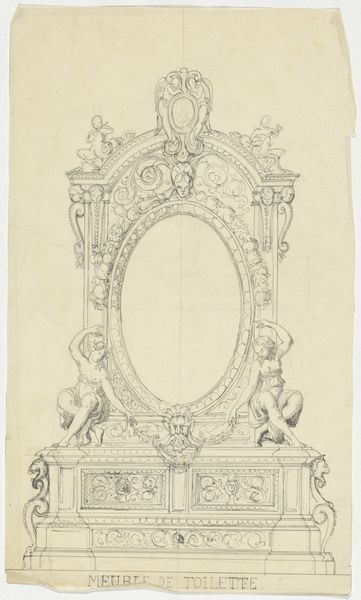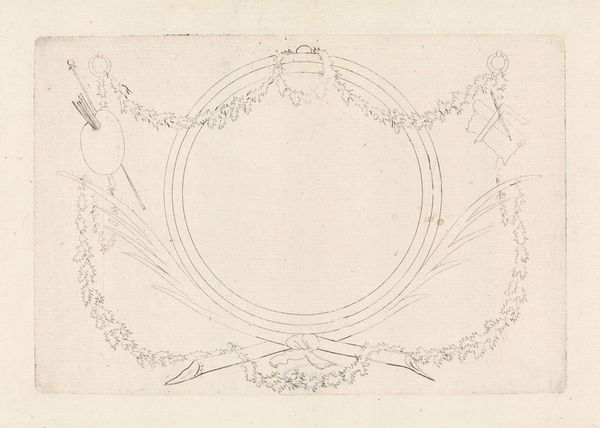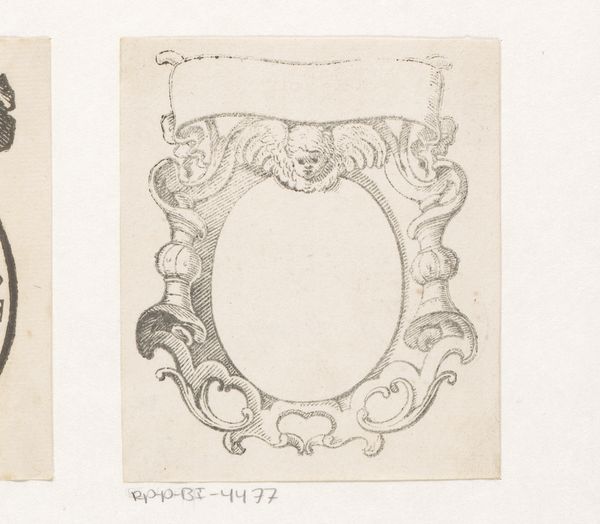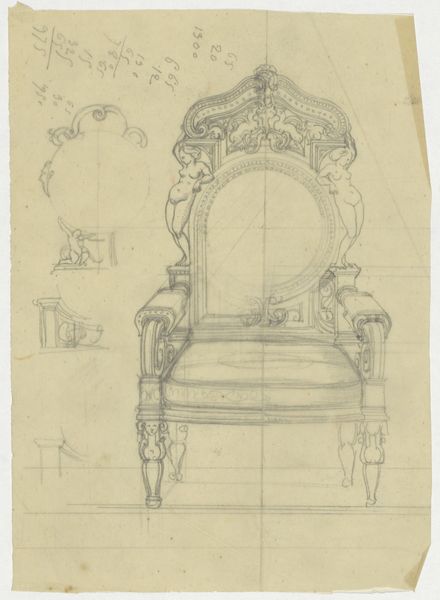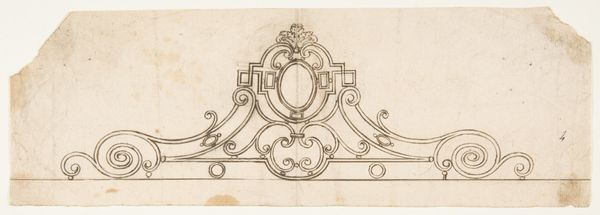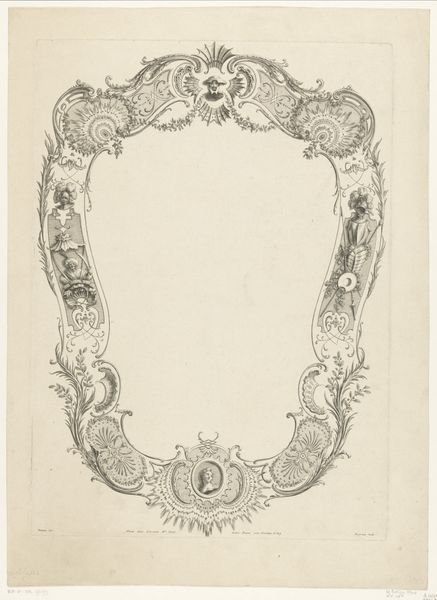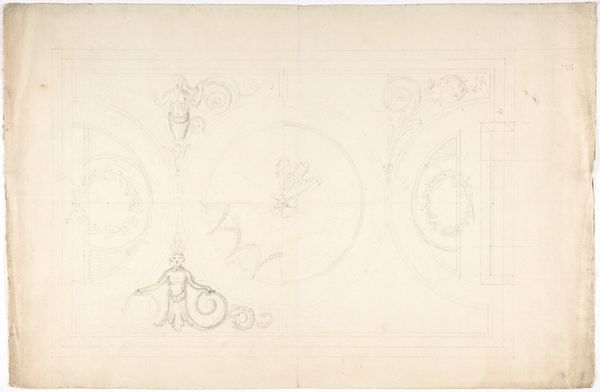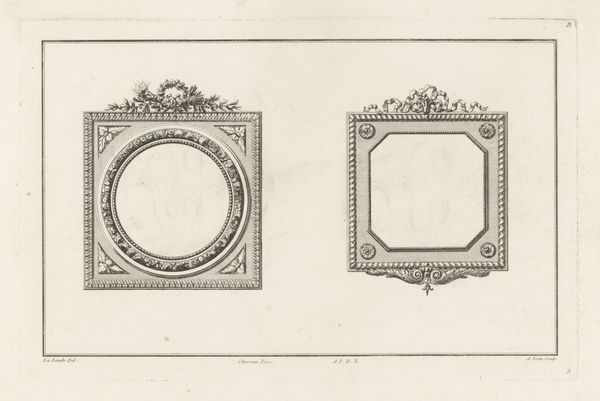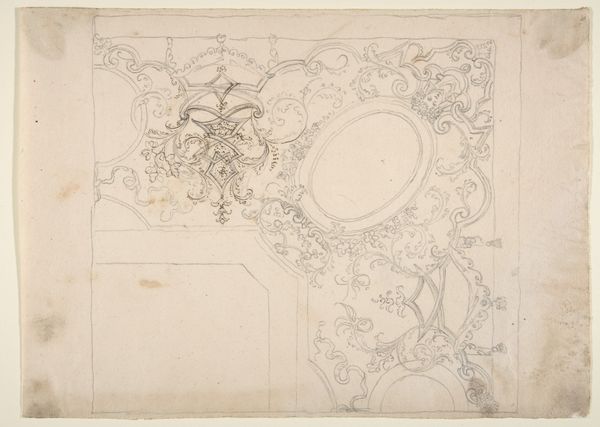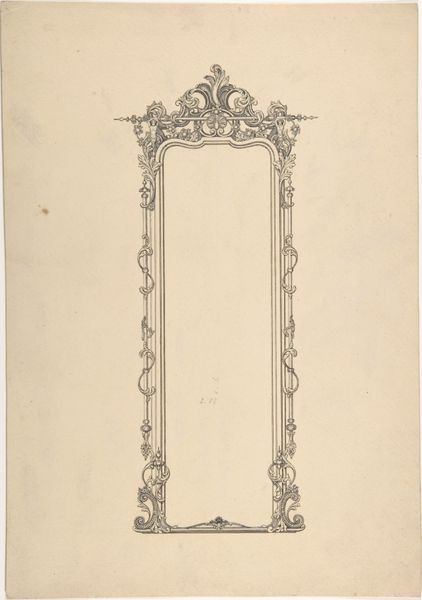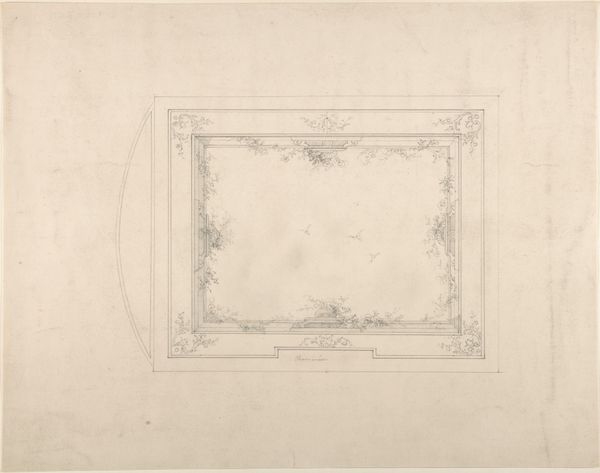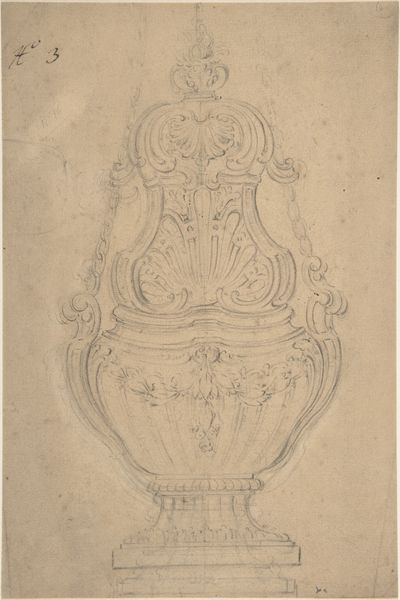
drawing, pencil
#
drawing
#
light pencil work
#
pencil sketch
#
old engraving style
#
form
#
geometric
#
pencil
#
line
#
sketchbook drawing
Dimensions: height 150 mm, width 114 mm
Copyright: Rijks Museum: Open Domain
Curator: Here we have "Lijst," a pencil drawing from approximately 1830 to 1850, attributed to Firma Feuchère. Editor: It feels very tentative, almost ghostly, the light pencil work gives the whole design a delicate airiness. Curator: Indeed. The focus here is quite clearly on form; note the interplay of geometric and ornate elements. The oval shape of the central void contrasts beautifully with the curvilinear flourishes at the top. The use of line is key here, isn't it? Creating depth and shadow with minimal shading. Editor: Right. I'm curious about the hand behind this. Pencil sketches like this speak to the initial labor and crafting processes of a Feuchère design. What kind of artisanal skill was involved? Was this design intended for metal work, or carving? Curator: I see your point. The cherubic figures flanking the crest suggest a connection to perhaps a larger decorative scheme. The materiality that is intended— stone, metal, or plaster — adds another layer to its intended semiotic purpose. A status marker for elite patronage and skilled artistic traditions. Editor: The sketch aesthetic is also telling; pencil lines would transfer easily into different mediums. Also, thinking of that era, you picture entire workshops devoted to pieces of this caliber. Who was drafting? And how does that influence value or market perceptions now? Curator: Questions of provenance and labor are vital here, highlighting art production's complicated processes and context, especially around the firm’s contributions in the era. Editor: In the end, this object allows for considering hierarchy in craftsmanship. Is this just a preliminary design, or a statement about Feuchère’s own artistic capability and the craftmanship in his firm? Curator: Exactly. A subtle tension emerges between preliminary utility and refined aesthetics, adding depth to our viewing experience. Editor: This definitely leaves one thinking about labor and artistry intertwined, questioning what “the hand” really entails.
Comments
No comments
Be the first to comment and join the conversation on the ultimate creative platform.
